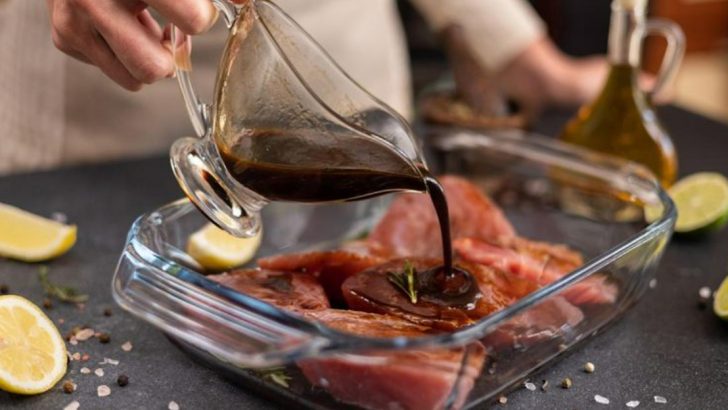Cooking at home feels cozy and safe—like you’re in control. But even the most careful cooks can fall into bad habits that invite bacteria into the kitchen.
Some risks are easy to miss, especially when you’re rushing or tired. These 15 common kitchen mistakes are small, but fixing them can make a big difference for your health.
1. Using The Same Cutting Board For Raw Meat And Veggies

Raw chicken juices soaking into the same board where you’ll later chop cucumbers? That’s a fast track to cross-contamination. Bacteria from raw meat can cling to tiny scratches in the board, then sneak into your salad without you knowing.
Using separate boards—one for meat, one for produce—is a simple fix. Color-coded sets make it easy to remember and even easier to stay safe.
2. Tasting Food To Check If It’s Still Good
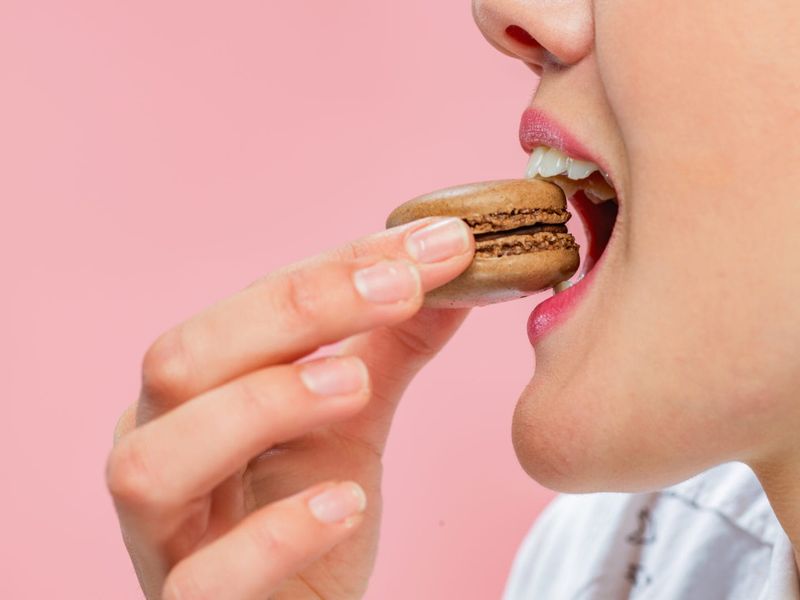
Giving leftovers a nibble before deciding if they’ve turned bad can backfire fast. Foodborne bacteria don’t always change the smell, look, or taste of a dish.
When in doubt, trust time and temperature—not your tongue. If something’s been sitting out too long or stored incorrectly, toss it without a test bite.
3. Not Washing Hands After Handling Raw Meat

Those invisible bits of chicken slime? They end up on fridge handles, spice jars, and faucet knobs before you realize it. Handwashing breaks the chain and keeps germs where they belong—off your food.
Soap and warm water for at least 20 seconds make a real difference. Think of it as a tiny ritual before moving to the next ingredient.
4. Leaving Leftovers Out For Too Long
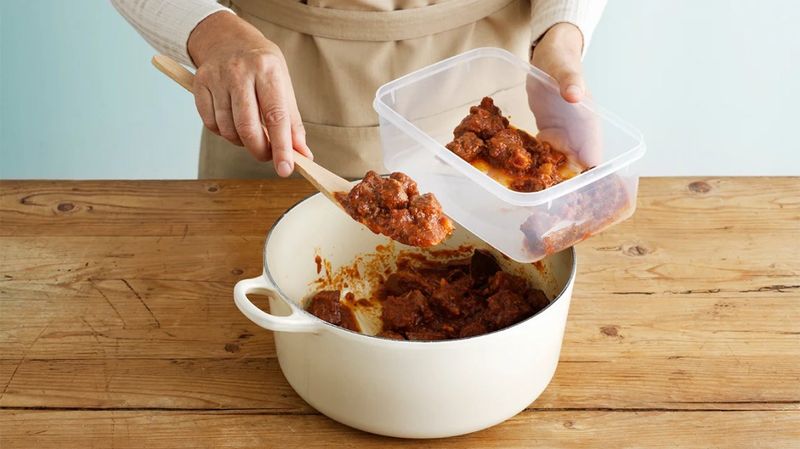
The window between dinner and clean-up can slip by faster than expected. Food left sitting at room temperature for more than two hours becomes a playground for bacteria.
Get leftovers into the fridge quickly, especially in warm weather. Shallow containers help them cool faster and more safely.
5. Thawing Food On The Counter
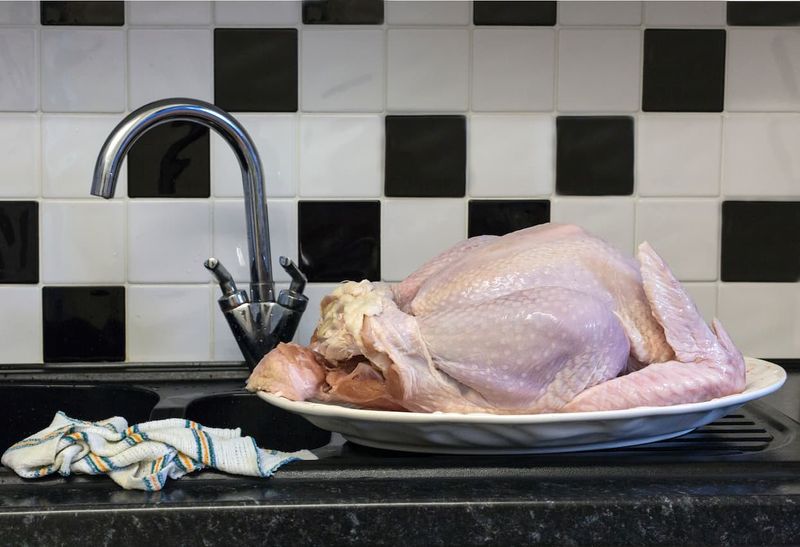
Leaving frozen chicken on the counter all afternoon feels easy, but the outer layer hits the danger zone long before the inside thaws. Bacteria multiply fast when temperatures climb above 40°F (4°C).
Safer options include thawing in the fridge overnight or using the defrost setting on your microwave. Both help keep things cool—literally and microbiologically.
6. Reusing Marinade Without Boiling It
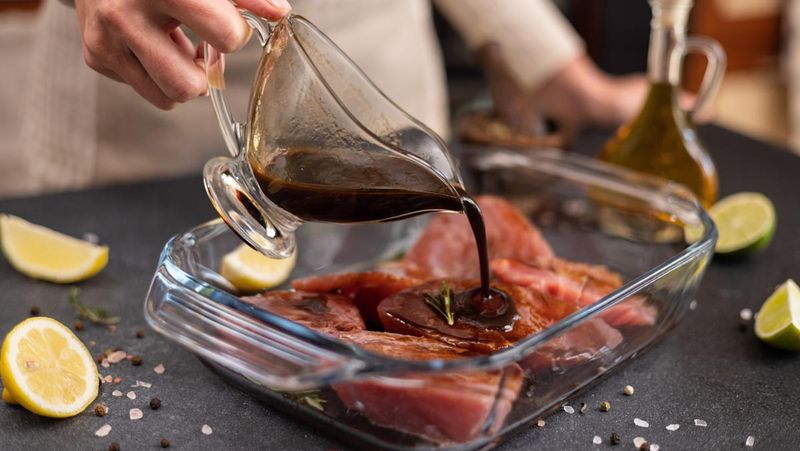
That flavorful soak for your chicken? Once raw meat touches it, the liquid’s off-limits unless cooked. Pouring it back over finished food adds flavor, but also a potential side of pathogens.
Boil marinades if you want to reuse them for basting or sauce. A few extra minutes on the stove makes all the difference.
7. Undercooking Chicken Or Ground Meat
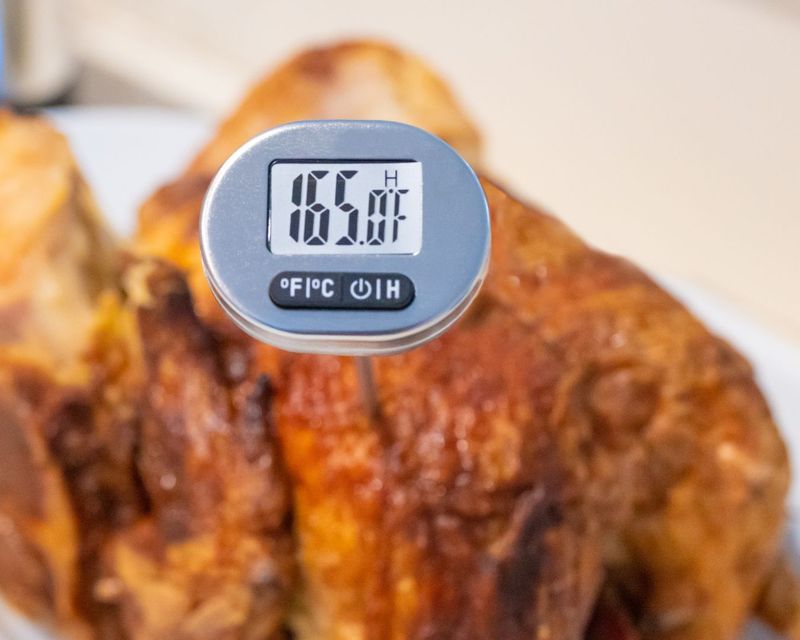
Pink chicken or a burger that’s still red inside might look juicy, but it’s risky business. Harmful bacteria like Salmonella and E. coli can survive without proper heat.
Always check the internal temperature—165°F for poultry, 160°F for ground beef. It’s about more than taste; it’s about staying well.
8. Washing Raw Chicken In The Sink
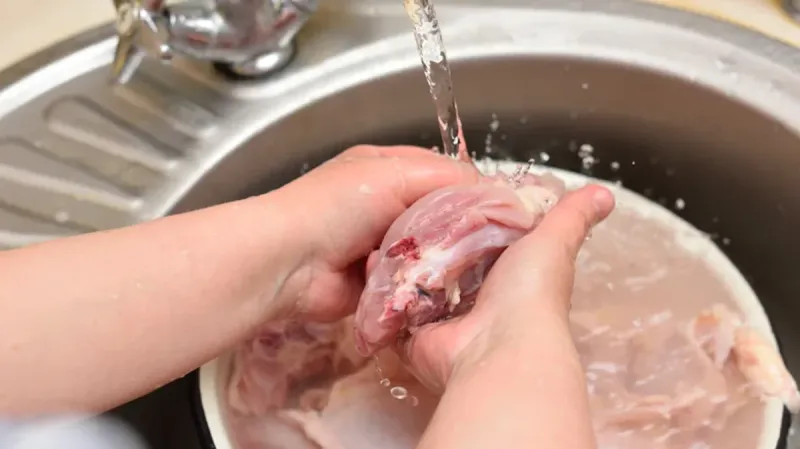
It might feel like you’re rinsing away germs, but water splashes can carry bacteria up to three feet. That means countertops, nearby produce, and even you can get hit.
Skip the rinse and let heat do the work. Cooking to the right temperature is the only way to ensure chicken is safe.
9. Ignoring Expiration Dates On Perishables
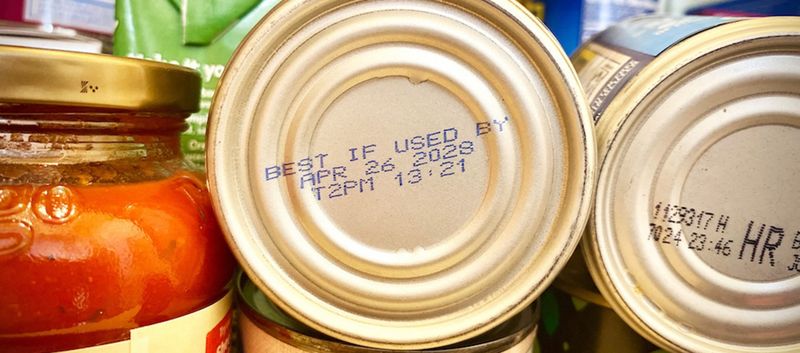
That yogurt cup from two weeks ago might look fine, but its safety is no guarantee. Expiration dates aren’t just about taste—they help protect against spoilage bacteria.
When in doubt, don’t sniff and guess. A quick check of the label can save you from an upset stomach later.
10. Not Cooling Hot Food Before Storing
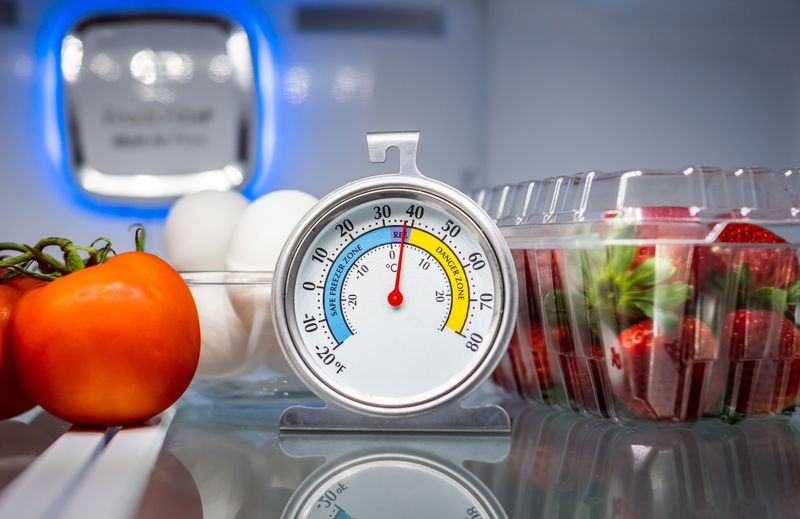
Lid on, straight into the fridge? That traps heat and keeps the food in the danger zone for too long, inviting bacteria to grow deep inside the container.
Let hot dishes cool slightly before storing—just not too long. Spreading food into shallow containers helps it chill quickly and evenly.
11. Storing Raw Meat Above Ready-To-Eat Foods
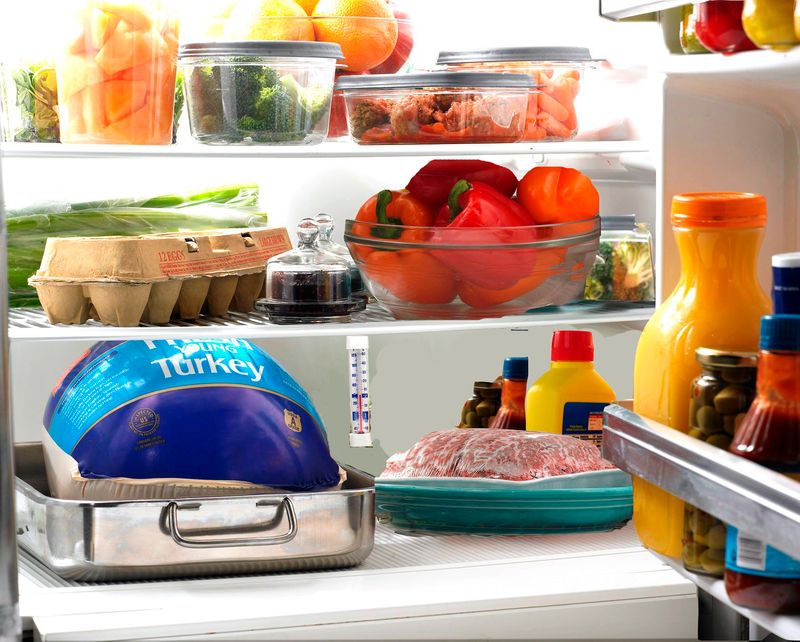
If a package of raw chicken leaks onto your salad greens, you won’t notice until it’s too late. Gravity does the dirty work in the fridge.
Always keep raw meat on the bottom shelf, tucked securely on a plate or tray. It’s a simple shift that protects everything below it.
12. Forgetting To Sanitize Kitchen Sponges
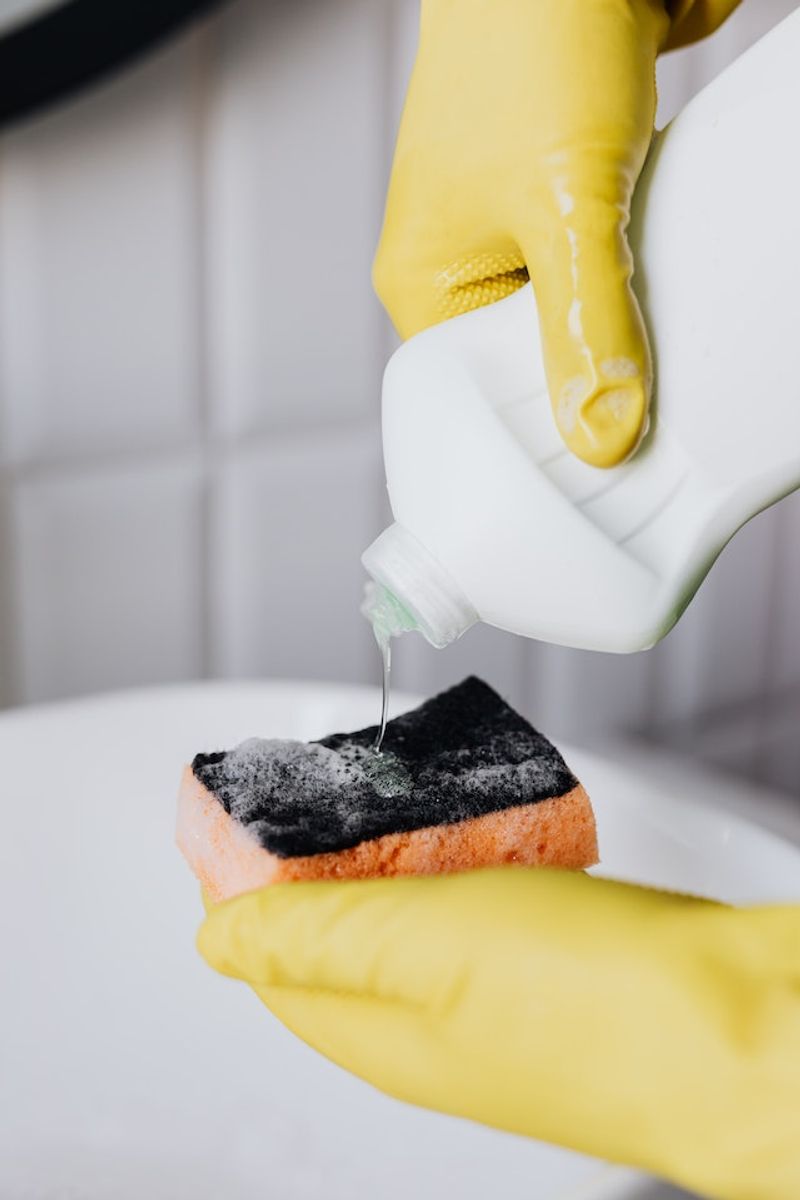
Warm, damp, and full of food bits—sponges are like tiny germ hotels. Even if they look clean, they can harbor bacteria like E. coli or salmonella for days.
Microwaving a damp sponge for a minute or replacing it weekly keeps your cleaning tools from turning into contamination sources. Better yet, switch to washable cloths.
13. Using The Same Towel For Hands And Dishes
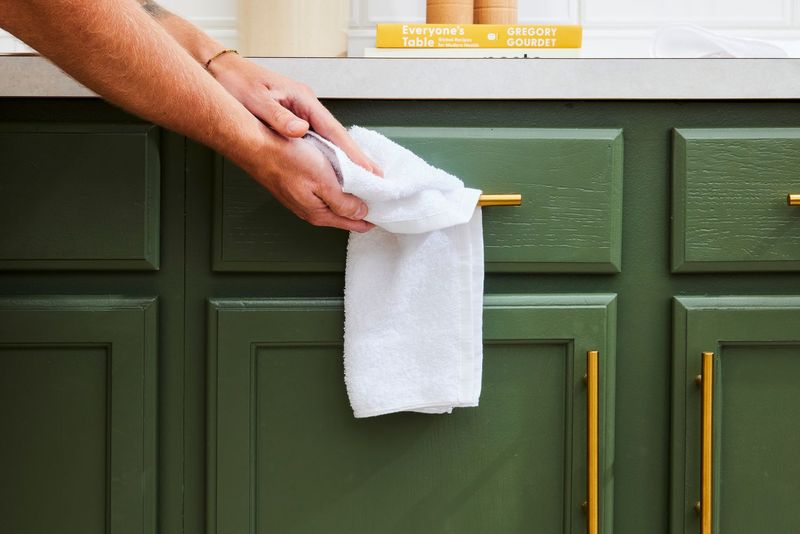
That towel you just used to dry your hands? If you also wipe plates with it, you could be spreading bacteria from hands to clean surfaces.
Keep separate towels for drying dishes and for drying hands. Wash them frequently to prevent them from becoming hidden hazards.
14. Not Reheating Leftovers To The Right Temperature
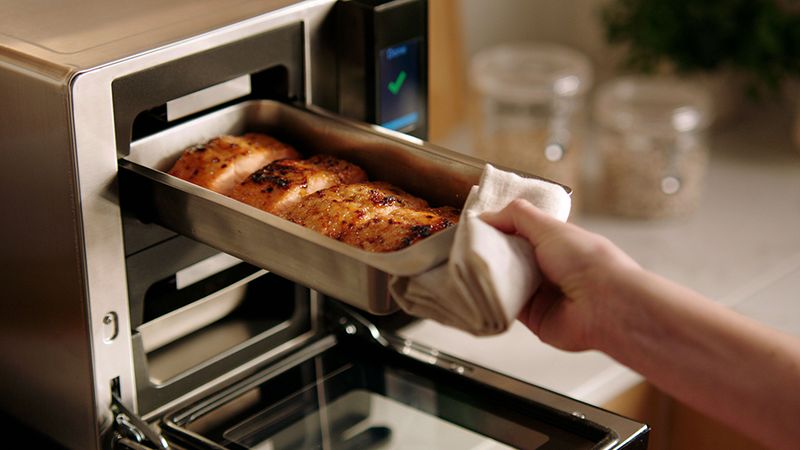
Warm isn’t enough—leftovers need to hit at least 165°F (74°C) to be safe. Otherwise, bacteria that survived the fridge can wake up and thrive.
Use a thermometer for thick dishes like casseroles or stews. Steam rising doesn’t always mean it’s hot enough in the middle.
15. Using A Food Thermometer Incorrectly
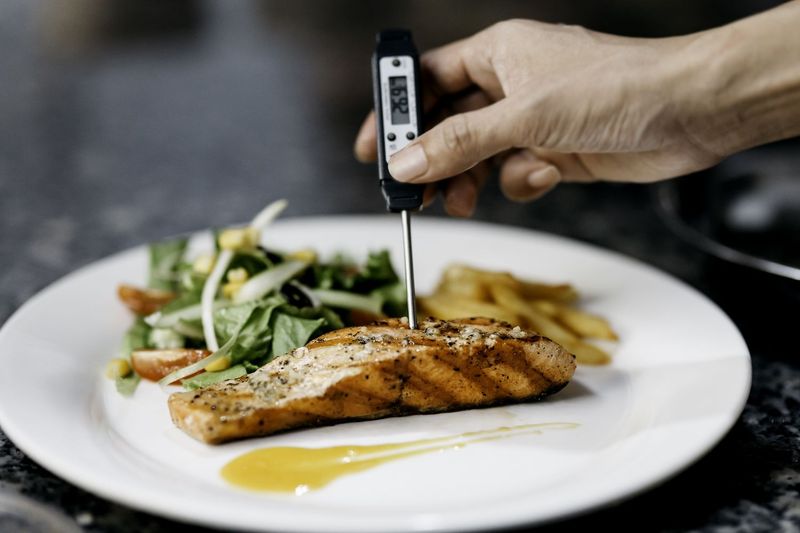
If the tip’s not in the thickest part of the meat, you’re only guessing. Measuring next to bone or fat can give a false reading and leave parts dangerously undercooked.
Insert the probe into the center of the thickest area, avoiding bone and gristle. Practice makes perfect—and keeps dinner safe.

